After a filling breakfast our motley crew was issued the Swarovski scopes and tripods that would be ours to use for the next several days in Kazakhstan. The new magnesium telescopes were lightweight and sturdy, the new 25-50X wide angle eyepiece allowed for a larger field of view without diminishing the quality of said view, and I, for one, couldn’t wait to get the equipment out in the field and look for birds! We all piled into two vans, luggage and all, and headed out of Astana and south onto the steppe, passing wastewater lagoons and some cool birds like Black-winged Stilts and Northern Shovelers on the way.
Other birds en route included hordes of Eurasian Kestrels, quite a few Red-footed Falcons, and then the birds that forced us to make our first stop: Demoiselle Cranes! Now, as a birder living in New York City I rarely get to see cranes. I don’t get to enjoy the spectacle of thousands of Sandhill Cranes migrating in the midwestern United States, I don’t get to see the nearly-extinct Whooping Crane, and I certainly don’t ever get to see Eurasia’s Common Cranes in any of my local patches. So, for me, the chance to actually see any cranes at all is a treat, and to see a crane that breeds in Central Asia, migrates through the Middle East, and winters in Africa is just a bit mind blowing. Apparently, they were happy to see me as well, as one of them jumped for joy!
Actually, the bird wasn’t jumping for joy, but jumping as kind of a nervous tic because though we were hundreds of meters away (as the lousiness of the shot above should tell you) cranes like their space. And when they feel intruded upon they tend to get antsy and express their antsiness by jumping. At least, that is what some of the birders how some of the birders with more experience with Demoiselle Cranes explained it. And really, if you were minding your own business, just feeding in a field, and suddenly two vans screeched to a halt and you saw this wouldn’t you get a bit antsy?
At the same stop we also got decent views of a Common Siberian Stonechat (thanks for the correction, Jochen). It was a bit distant for superior images, but I figured that at the least our North American readers might like a look…
After drinking in the cranes for awhile, as well as a fly-by Red-footed Falcon and some other birds we continued on our way, stopping maybe fifteen minutes later when we came upon a horde of Ruffs. Now, back in 2007 when I was in Germany I got my first and only look at a Ruff. It was in non-breeding plumage and while I was glad to check it off my life list I felt like it wasn’t quite right, that I should see a Ruff in breeding plumage before I counted it. The week before I left for Kazakhstan there was a breeding-plumaged bird in New York, but I never got the opportunity to go see it. So seeing several hundred breeding-plumaged Ruffs at once, on the Kazakhi steppe, was a mind-blowing experience. You see, each Ruff has its own color pattern for its namesake ruff that it uses to attract the ladies in breeding season. Some have white ruffs, some reddish, some black. And though we saw these birds at long range through heat shimmer I don’t think I’ll be forgetting the view any time soon!
And, yes, that second picture in particular is horrible, but considering that the range was some absurd amount of meters (and things seem further away when you measure in meters) and the light was against us, well, I couldn’t expect to get much better.
One other note on our trip tot he Korgalzhyn State Nature Reserve: the sky was awesome. As an east coast American big skies are as rare for me as crane sightings. I couldn’t get over how one could make almost any picture about ten times cooler by including a giant slice of sky. For example, when we pulled over to look for birds I wanted to get a shot of the vans we were in and discovered that the shot could actually look rather dramatic just by putting the vans in the foreground and angling the camera upwards.
My next Kazakhi post will feature some more sky shots, much better looks at some Ruffs, a a trio of freaky game wardens, a mural, a map, and a bunch of other stuff so come back soon!
________________________________________________________________________________________________
My trip to Kazakhstan was made possible by the wonderful folks at Swarovski Optik who sponsored the trip 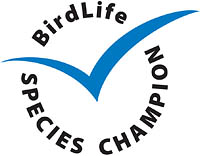 not only to draw attention to their marvelous optics but to the fact that Swarovski Optik is, with the RSPB, the Species Champion for the Sociable Lapwing, a critically endangered species that breeds almost entirely in Kazakhstan. We here at 10,000 Birds, the only blog designated a Species Champion by BirdLife International, salute Swarovski Optik‘s commitment to conservation.
not only to draw attention to their marvelous optics but to the fact that Swarovski Optik is, with the RSPB, the Species Champion for the Sociable Lapwing, a critically endangered species that breeds almost entirely in Kazakhstan. We here at 10,000 Birds, the only blog designated a Species Champion by BirdLife International, salute Swarovski Optik‘s commitment to conservation.
To learn more about 10,000 Birds’ commitment to conservation through BirdLife International’s Species Champion program and what it means to us at 10,000 Birds (or to donate to the program through 10,000 Birds) just click on the nice Species Champion logo to the right.



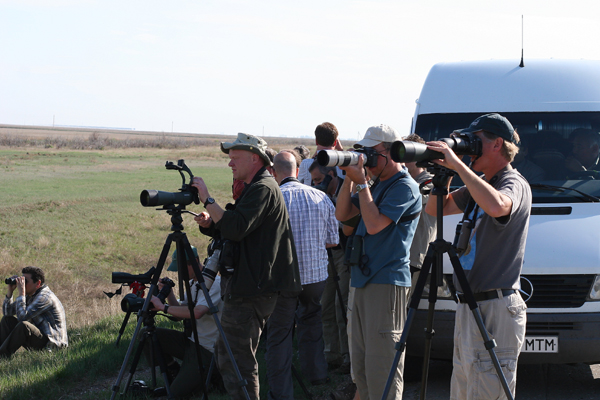
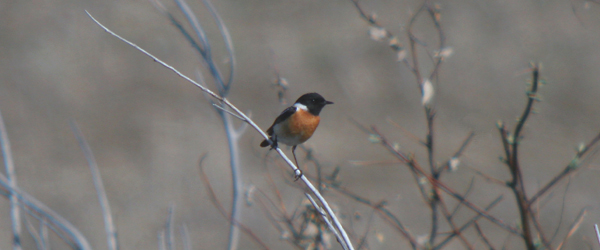
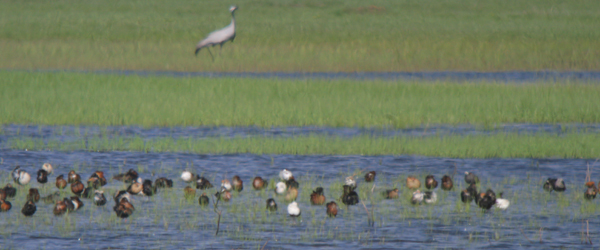
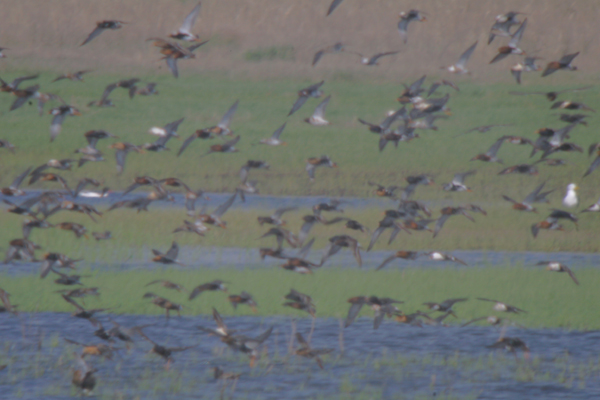
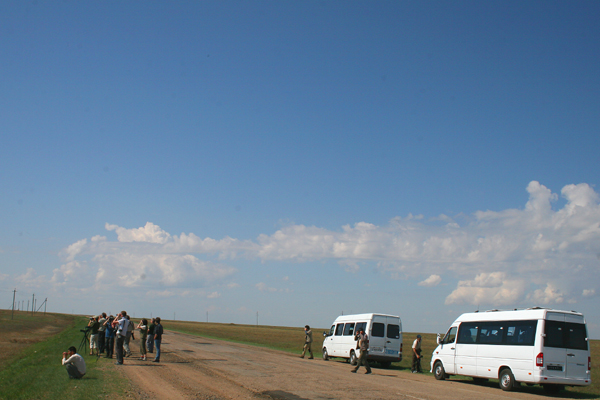











As usual I’m soooooooooooooooo Jealous!
Terrible pictures, amusing post but who is the Squatting Birder and does he have his own blog filled with birds seen from the squatting position?
@Will: Just wait…
@Alan Tilmouth: That’s actually one of the drivers…and he didn’t seem terribly interested in birds, just in driving really, really, fast!
The stonechat is not a Common Stonechat, it is of the form maura which is mostly regarded as a different species, the Siberian Stonechat. So you might want to chose the world bird list you follow accordingly and not waste a lifer.
Well, but have you seen a Common Stonechat in Europe, yet?
@Jochen: Thanks! My Collins guide (which I was using for Stonechat ID) has them as subspecies but not as full species yet, and I hadn’t checked around on checklists to see if the subspecies had been split. I’m slowly working on getting my world life list put together on the IOC list and I bet they have already split the stonechat (the IOC seems to have split everything!).